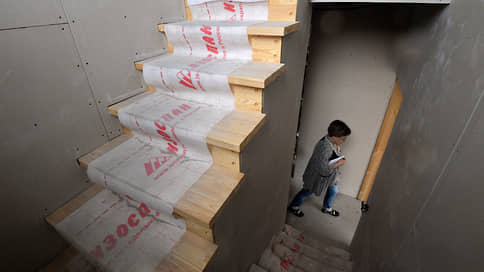In Russia, a subsidized mortgage may appear within the framework of individual housing construction at a rate of 1%
[ad_1]

In Russia, a subsidized mortgage may appear as part of individual housing construction (IHC) at a rate of 1%. It can be extended to house kits sold with a mortgage using escrow accounts. Such a loan will be subsidized by the state, whose task is to stimulate the introduction of individual housing construction, including through mortgages. Currently, the share of loans for individual housing construction in the total volume is 15%, and the authorities plan to increase it to 50%.
Deputy Minister of Construction and Housing and Communal Services Nikita Stasishin announced plans to launch a new subsidized mortgage for individual housing construction at 1% on December 13. He clarified that they plan to extend the initiative to contractors, who will be given the same powers as developers. “The State Duma will soon adopt a bill,” he noted. “I think next year we will extend this law to most regions of the country, because people have a need for such housing.” At the end of November, the State Duma adopted in the first reading a bill extending the mechanism of escrow accounts to the individual housing construction segment.
“In essence, the bank, knowing the manufacturer of the house kit, accrediting the contractor and using special accounts for issuing money for a regular construction loan, allows a person to obtain a preferential mortgage without additional guarantees and collateral,” explained Mr. Stasishin. “We will subsidize such a loan up to 1% . That is, this will not affect the final price for a person at all.”
Such a subsidy will stimulate the growth of individual housing construction volumes. While the volume of commissioning of individual housing construction projects in the Russian Federation is decreasing, commissioning by the end of 2023 could amount to more than 50 million square meters. m versus 57.2 million sq. m based on the results of 2022, the data was announced by Deputy Prime Minister Marat Khusnullin. Without strengthening the mortgage market in this segment and introducing new solutions, the decline may continue in 2024–2025. To change the situation, the government’s goal is to increase the ratio of the shares of individual housing construction and multi-apartment housing in the issuance of mortgages to 50% to 50%. According to the Dom.RF development institute, in the third quarter of 2023, the share of loans for individual housing construction and finished houses in the total number of issues was 15% (minus 1 percentage point compared to the second quarter).
Banks are ready to work according to the described scheme and are waiting for subsidies. In this case, we are talking about subsidizing the project financing rate for contractors operating in the individual housing construction market, VTB clarified. “Subsidizing project financing rates is important… also for large construction companies that do not offer an abundance of options in private housing construction due to their high cost compared to multi-apartment projects,” they noted. “If people are provided with convenient and affordable financing, they will be happy to start building their own houses, rather than moving to small apartments in large cities,” says Andrey Osipov, member of the board of Post Bank. “The reduced interest rate will increase the accessibility of the program for citizens and will attract attention to segment of house kits, which is still viewed with caution.” According to Senior Vice President of Promsvyazbank Alexey Budaev, an important factor at the moment is that the market itself is in the stage of transition from the “handicraft” construction of individual houses by private teams to full-fledged, organized work, including within the framework of 214-FZ.
According to Irina Nosova, Senior Director of the ACRA Group of Financial Institutions Ratings, the preferential mortgage program for house kits can be considered as a forced switch from classic preferential mortgages (primary, apartments). “In fact, the introduction of preferential rates in April 2020 led to a significant increase in the cost of primary housing (namely apartments), which continues to this day and contributes to a decrease in the affordability of housing,” she explains. “To support the construction industry and the economy as a whole, it is necessary to offer the population something that will be in demand.” The segment of loans for individual housing construction looks promising for borrowers and banks precisely due to subsidized programs, adds Nadezhda Karaeva, junior director for bank ratings at Expert RA. Currently, as part of subsidizing new buildings, the minimum rate is 3.5%. “Of course, a decrease in the interest rate will increase interest in this proposal,” says Anna Terekhova, head of the sales department of the development company Marmax.
Experts attribute an increase in the cost of such housing to the risks of mortgages on individual housing construction. “There is a risk of rising prices for house kits due to increased demand, so you should carefully approach regulatory instruments,” notes Mr. Osipov. As for the risks, if subsidies are provided by the developer, we can predict an increase in construction costs and an increase in demand – similar to the MKD when government subsidized programs are introduced in 2020, notes Anna Terekhova. “The introduction of a preferential program at a rate significantly lower than the market rate can certainly lead to a imbalance in supply and demand and a sharp increase in prices for country houses,” concludes Managing Director of the NKR rating agency Mikhail Doronkin. “For a balanced increase in prices, it is necessary to ensure a sufficient supply of such objects, and also impose certain restrictions on such mortgages.”
[ad_2]
Source link





